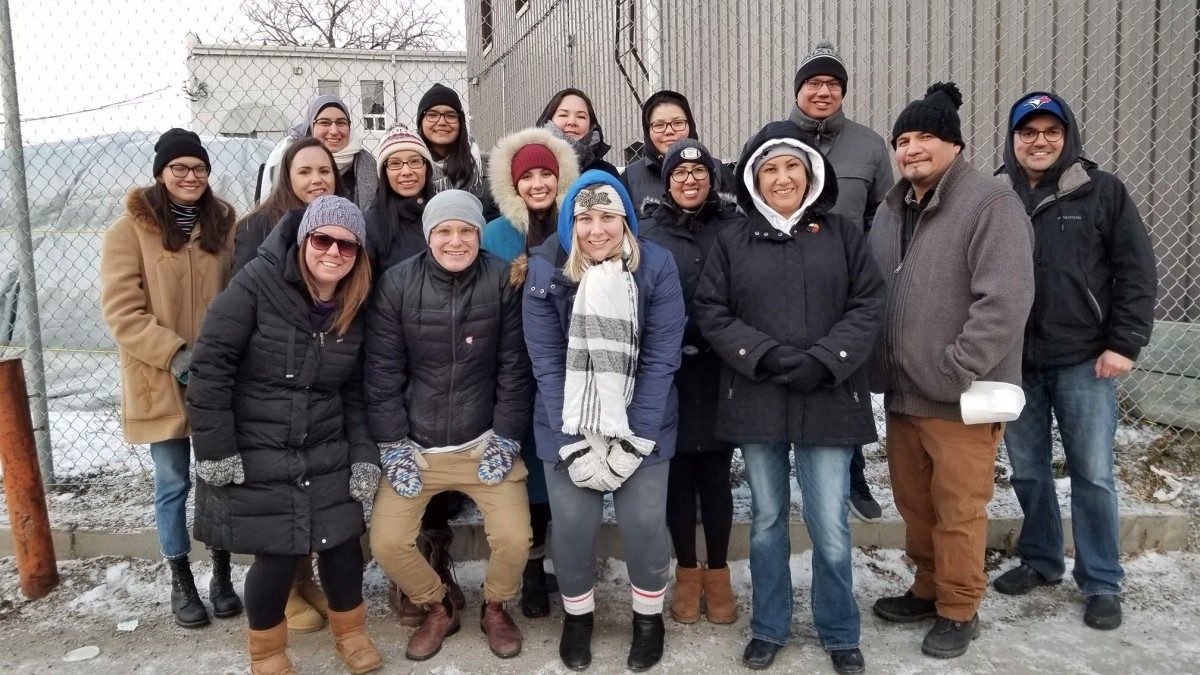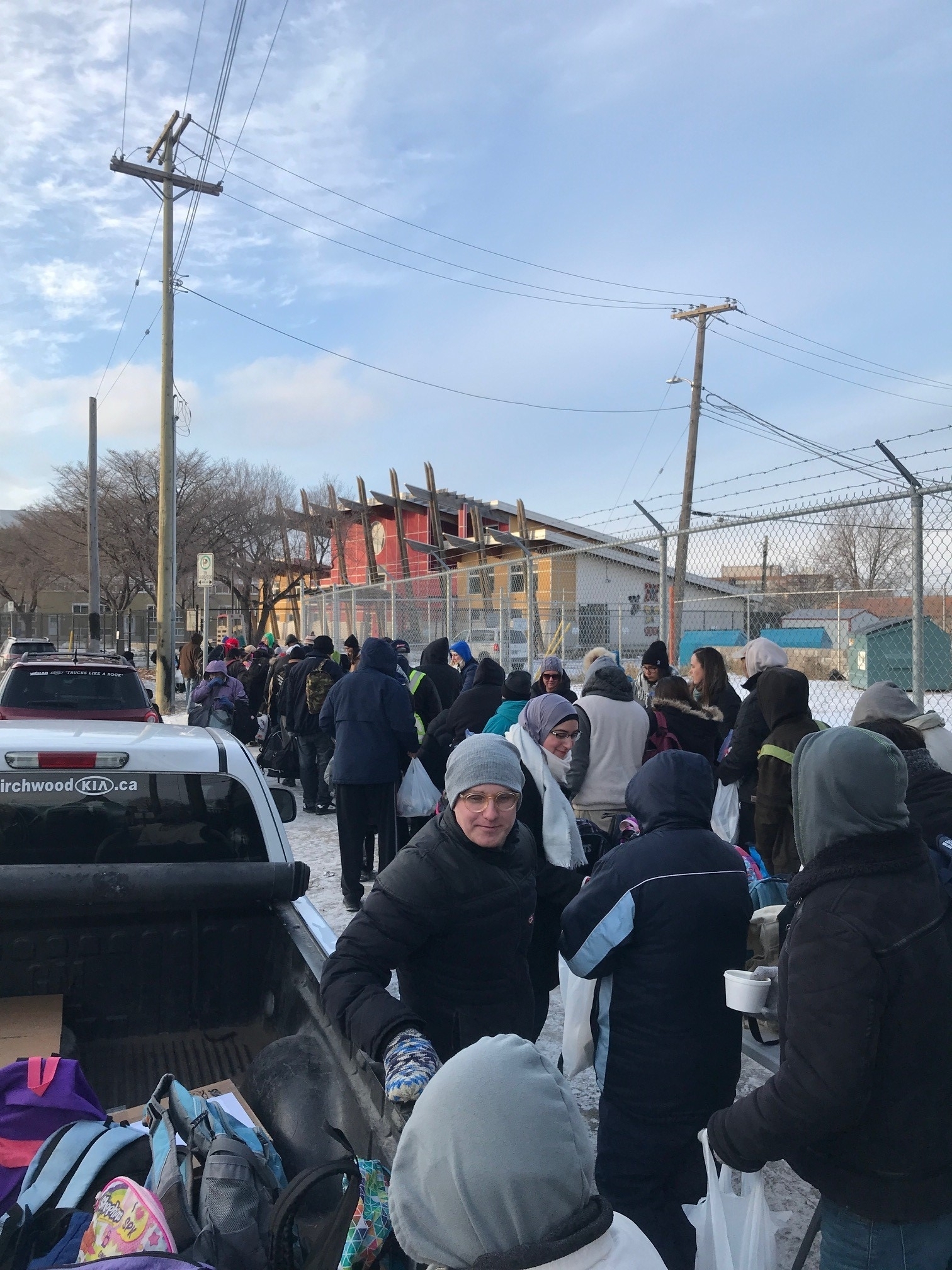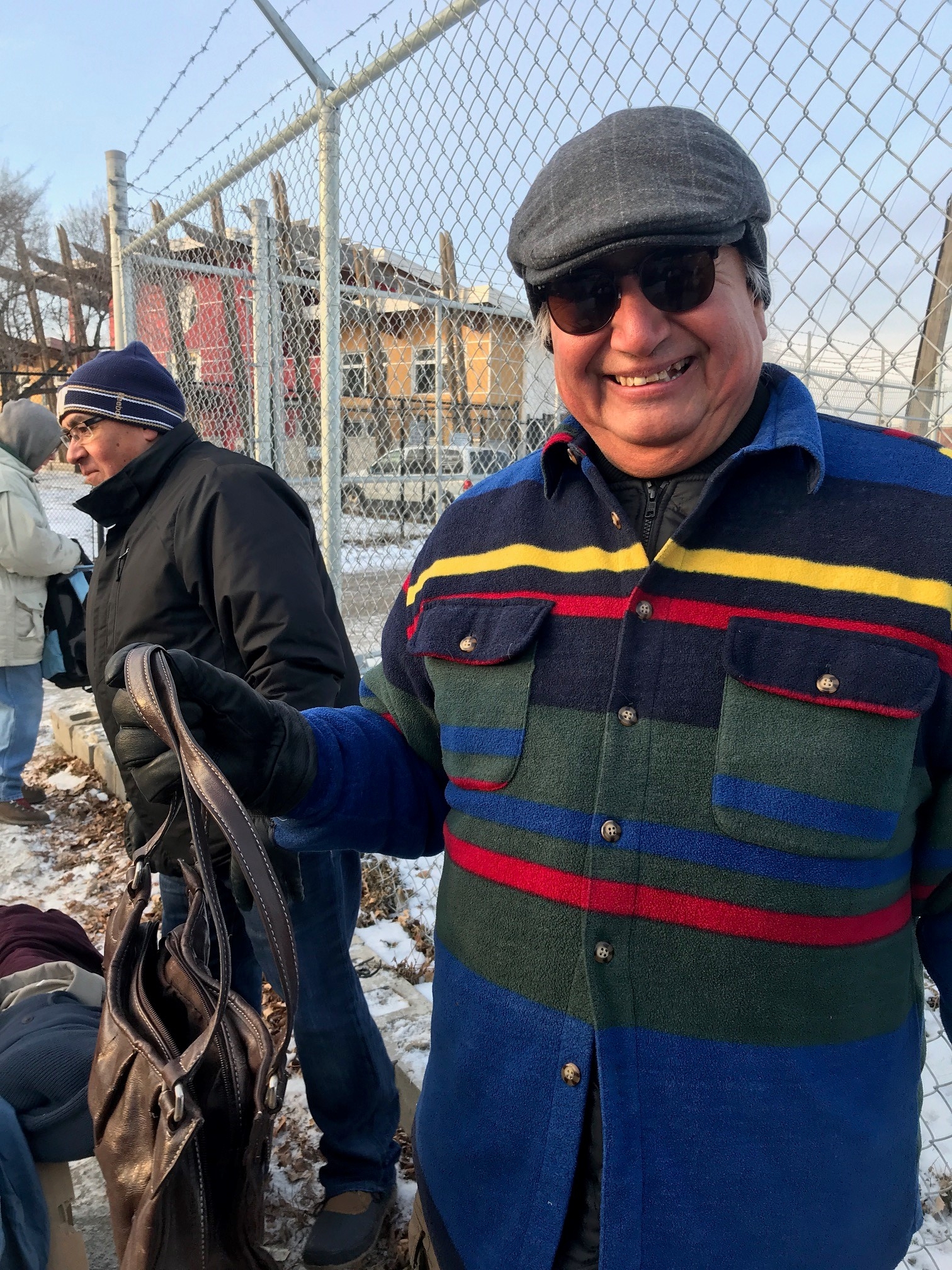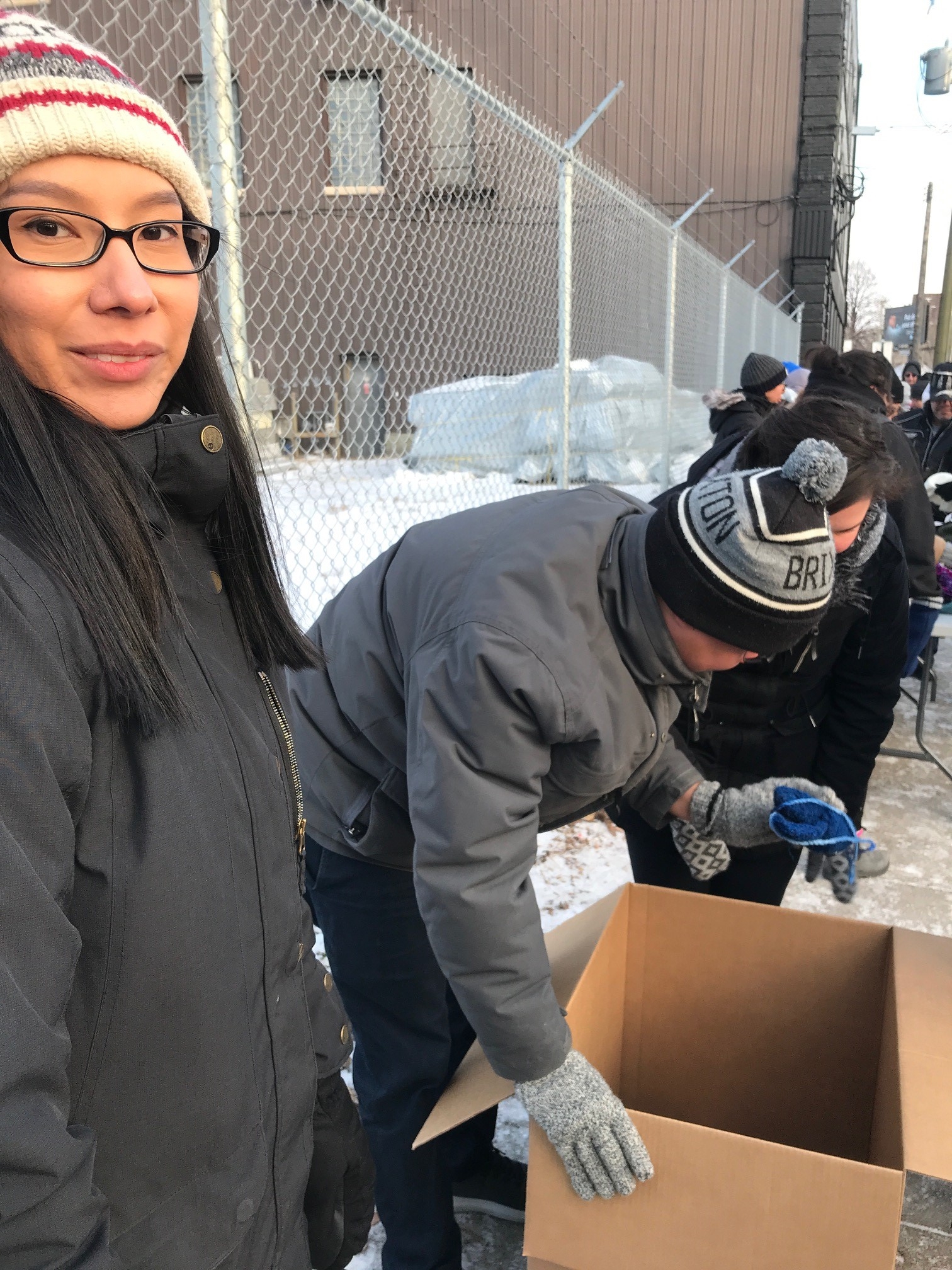
Indigenous Circle of Empowerment (ICE) students with #GotBannock?'s Althea Guiboche
Bannock and Backpacks: Indigenous students give back to community
Students with Indigenous Circle of Empowerment wrap up third year of Bannock and Backpacks campaign.
Students from the Indigenous Circle of Empowerment (ICE) student leadership development program recently wrapped up the third year of the Bannock and Backpacks campaign. The campaign consists of a month-long donation drive for toiletries, winterized clothing, and personal hygiene items to fill 100 backpacks that are given to those in need. Partnered with Althea Guiboche, the Bannock Lady and founder of the grassroots organization #GotBannock?, the month-long donation drive and community day of action was yet another success. UM Today sat down with three ICE students — Fatima Jarkas, Kirsten Fleury and Anita Murdock — to learn about the effort that goes into a donation drive of this capacity.
UM Today: Let’s start from the beginning. Can you tell me what interested you in getting involved with the Indigenous Circle of Empowerment program?
Fatima Jarkas: I wanted to be able to gain leadership skills, get more involved with the community, work on self-development and give back. I heard about ICE through the Indigenous Student Newsletter.
Kirsten Fleury: A friend told me about her development and speaking tools that helped her along the way [through ICE]. I was interested in finding community and meeting new people on campus, too.
Anita Murdock: I became interested to help alleviate the stress of school. A friend of mine suggested I get involved with cultural activities, that those things can help ground you. I figured I’d take it a step further and get involved with the community and gain leadership skills, too, to help me communicate myself clearer in the community.
Can you describe the donation drive? Did it meet your expectations?
FJ: Our initial goal was to fill 100 backpacks. The ICE group divides itself up into smaller working groups. I was personally involved with corporate donations, so we secured donations from Assiniboine Dental Group, Emad Pharmacy, the Winnipeg Jets, Safeway and Superstore. Other donations came from The Kindred Project, Be the Reason and U of M Career Services.
KF: We also partnered with Bison Sports, who allowed us to attend their games with our donation drives and donated men’s shaving kits for the backpacks. I was surprised with how everything went. We had a group of 16 people, which is the biggest ICE group so far, and everyone was able to expand on how much we could do for the drive. It went really well, but we can always try to [increase] how many bags we have in the future years. There is a need and a want. Everyone who came through the line [at the community event] was so appreciative.
FJ: I had a couple of people blow me a kiss as a thank-you!
AM: It really surpassed my own expectations. I was involved in the grassroots donations, and was tasked with spreading the word on campus about the collection drive. There were people who hadn’t heard of it before, listened and came back a second time with donations.
Describe the event in the community on Nov. 18.
FJ: We all met at Migizii Agamik [The Bald Eagle Lodge] and loaded up all the materials and drove together to Dufferin [Avenue] and Main Street. We were set up like a store. I thought it might end up being chaotic, but everything went really smoothly and everyone was respectful and very kind. Everything was handed out in forty minutes. It was very cold, and it was a good reminder that people have to live like this.
KF: It was really cold, but everyone was in good spirits. Everyone was really happy to have the opportunity to give back to our community and give our time. This personally was my first time giving my own time to interact with the homeless population of Winnipeg. It was a learning and growing experience.
AM: It was very quick, and it was very cold! A lot of people engaged in conversation. It was an hour of compassionate people giving and receiving.
Why is it important to give back to community?
FJ: When we raise awareness through campaigns like this, we can relay the message that food and warmth are essential — especially in Winnipeg — and I was able to do this specifically within my friends and family. Every single person I contacted was able to give me donations and money. It helped me grow with my friends and family. My goal is to continue to raise awareness for #GotBannock?.
KF: Growing up in the Girl Guides community, it’s always been a part of my life to give back to the community. I think it’s really important to be aware of your privilege and help those around you who aren’t. I also think it’s important that those affected by homelessness or poverty can see that there are people who care about them and aren’t making assumptions.
AM: I think Justin [Rasmussen, Indigenous student advisor and ICE program facilitator] put it very clearly to us — that it could very easily be one of us [needing donations], or our brothers and sisters. You want to be humble and contribute back to your community when you are able to do so.
The students of ICE would like to thank all those who donated, and remind everyone that GotBannock? takes yearly donations online here. The next day of action is Dec. 16 and GotBannock? is in need of funds to buy food.
Fatima Jarkas is in her third year of science and is hoping to pursue a career in medicine.
Kirsten Fleury is in her fourth year of science working towards her bachelor degree with a major in biology and is hoping to apply to the Max Rady College of Medicine.
Anita Murdock is in her first year of Graduate Studies in microbiology.










